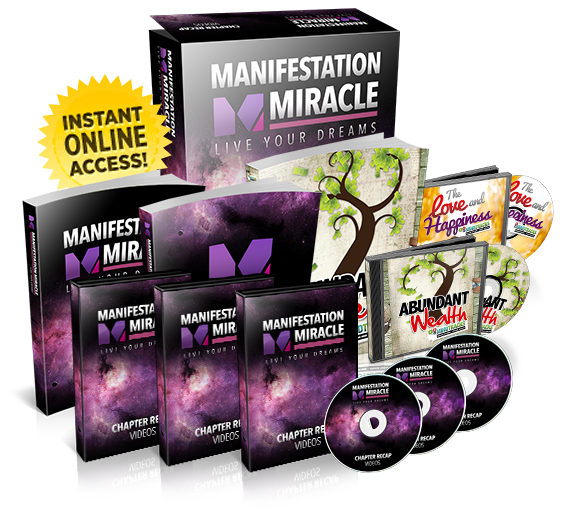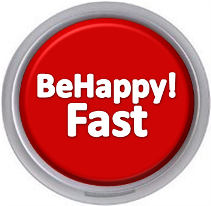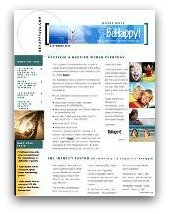Goal Setting to Be Happy!
(Part One):
Creating Positive Expectations for the Future (and a Better Quality of Life)
Please contribute to the happiness of others by providing your own personal tips on setting or achieving goals by filling in the invitation at the bottom of this page... |
Goal setting is a fundamental personal development and self-help topic, taught by just about everyone in the business. You probably already know that.
There are numerous goal-setting “How To” books available; you can go to many goal-setting programs or workshops; and there are countless articles on the
subject – both in print and on the internet.
So how is this process different or better? So you see, it’s more the context - rather than the content - that is different with this BeHappy! “Do” system (process) of setting goals.
Well, that’s a good question – I’m glad you asked (you did, didn’t you?).
Part of my answer lies in the fact that it isn’t necessarily that the concepts or theories are much different; because, really, many of them are the same as most of the fundamental goal setting concepts everyone teaches. In fact, the truth is that goal setting is a relatively standard procedure, with not much difference between anyone’s concepts. Everyone mainly just packages and presents the same basic concepts differently.
What makes this plan unique, though, is three-fold:
And, because it is very comprehensive and action-oriented, I have divided it into 3 parts (this being Part One). Otherwise, it could get overwhelming – with just too much all at once.
I hope that answered your question. If it didn’t, again, please click here to contact us and we’ll address your issues or questions right away.
Also, if you’re already a subscriber to the BeHappy! Newsletter, you’ve read an introductory article about goals in the February 2009 edition – and hopefully taken some action towards achieving your goals for this year, the next decade, and the rest of your life. If you are not yet a subscriber, click here and become one. It’s FREE.
This article (Part 1) will review what’s in that introductory newsletter article and take you much deeper into the subject. It will really start to help you understand what goals you should be striving to achieve (if any) – which is a step many goal-setting programs skip. You will learn a bit more about who you are and what will truly make you happy by going through this first part. Then in Part 2 we’ll go through some very specific processes to fine-tune and solidify the most important things you need to achieve this year and for the rest of your life. And finally, in Part 3 we’ll end with a complete and detailed plan to set and achieve your goals, both short-term and long-term. This is essential to successful goal-setting and achievement.
Remember – the entire focus of this process is to create your happiest possible life. That’s the objective of the whole BeHappy! system. So, the goals you develop and achieve as part of this process could be much more impactful, overall, than with other goal-setting exercises you may have tried in the past.
OK, now, let’s talk about your goals...
What are they for this year? What about for 2015, 2020, and 2025?
Depending on your Definition of Happiness it could be very important to have goals. And really, even if that definition does not require you to have any major goals, they may still be important in the grand scheme of things because goals help create positive expectations for the future. And positive expectations for the future - something to look forward to and/or the belief in your ability to create, do, or be something more than today - are all effective happiness-builders.
Even better – having goals is a way to improve your life, and the lives of others, by actually creating, doing, or being something more than you have or are today - which is a fundamental reason why there is innovation and progress in our world.
Whether your desire is to help people in need, create a multi-million dollar net worth, or become the leader of your country, it’s important to have goals related to what would make you most happy and fulfilled in your life. And you should have both short- and long-term goals. Short-term goals are goals for the next year or so and long-term goals cover the next decade or more.
So, let’s get started...
STEP ONE: Your Definition of Happiness
|
The first step to anything related to happiness, quality of life, and even goal-setting, is to know why you are doing (or going to do) something. This is a basic concept. “Begin with the end in mind.” Or, as Stephen Covey puts it, “If the ladder is not leaning against the right wall, every step we take just gets us to the wrong place faster.”
Most people have not taken the time to really know what will make them as happy as possible in life.
For example, you could want to become a teacher (because you love teaching or you think it’s a noble profession), and at the same time have a goal or desire to have a $500,000 annual income (because you believe wealth will make you happy). Unfortunately, generally it’s rare – very rare - for teachers to make that much money. It’s also not necessarily true that money will make you happy (see the Money & Wealth section of this website to learn more – and to help you get wealthy if that’s one of your goals).
Certainly there are ways to achieve both (becoming a teacher and making $500,000 per year) – you just have to have the right goals and a plan to achieve both. But the point is, you must know whether they are both part of your Definition of Happiness or whether one or the other (or neither) will really make you as happy as possible.
You may want certain things – but until you’ve taken the time to create your own personal Definition of Happiness, your “ladder” may be leaning “against the wrong wall”. If both – teaching and wealth – are, in fact, critical to your happiness (based on your Definition of Happiness, both should be goals, complete with a plan. If both are not critical to your ultimate happiness, whichever is part of your definition must be a main focus of your life, with the other potentially being something to address part-time (or maybe not even at all). And if neither turn out to be part of your definition your life will be much different than you thought.
|
|
So, again, STEP ONE is to create your Definition of Happiness. Click here for a “primer” on the topic. |
 |
For best results, though, click on the "Get Instant Access" button below to get my "Definition of Happiness Creator", and I'll send you a copy of two of my best ebooks, Be Happy at Work and A Guide to Healthy Living as a gift.
Now, I realize not everyone reading this will order BeHappy! (even though you can get it free) or even click on the link above to learn more about your personal Definition of Happiness, so if you’re one of those people – and you still want to create and achieve goals that will improve your quality of life - at the very least, answer these important questions:
- What has made you happy in the past?
- What do you want in life?
- What do you need in life?
- What is missing from your life right now?
- What has made you unhappy in the past?
- Do you have any regrets? If so, what are they?
These are the key questions we all need to answer for ourselves to help start creating – or at least beginning to “feel” - what our Definition of Happiness might contain. If you at least answer these questions, you will not go into this goal-setting process “blindly” and you'll much get more out of it.
|
For a bit more on this...
What is it you want for your life? Make a list of the things that are most important to you. Do it right now. Don’t go on until you have a list of at least 5 things that are important to you in your life. This is critical to the process. So don’t skip over it.
What has made you happy in the past? This could be important to you since what has made you happy in the past could give you some insights into what will make you happy in the future. For example, in BeHappy I take you through a full “look back” to specific periods in your life which helps identify what really has made you happy throughout your life.
For example, has having lots of friends been a source of happiness for you? Or what about just having one special friend? Is it peace-of-mind that has made you happy, or is it challenges and obstacles that juice you? Were you happiest when you lived in a certain city or when you were striving to achieve a certain goal? Were you happiest when you were in a specific job or were occupied by a certain task or hobby? These are the types of things you should write down right now to start getting a better perspective on what you need in your life to BeHappy!
What’s missing from your life right now? If there is nothing missing, you’re very fortunate. But even still, you need goals to BeHappy! (by creating positive expectations for the future). And if there are some things missing, are you taking action to change that?
What is missing? Is it related to financial resources? Is it a special relationship? Is it a job or career you love? What about an ability to contribute more? Are you missing something related to education, having children, or the place you live? Whatever it is, it’s important to know. Write down – right now – what you feel is missing from your life.
These are three of those basic questions I listed above as the least thing you should do if you are not going to go through the process of defining your happiness. Go through the list, one-by-one, and do the same thing for each. By doing this, you will start to get a perspective on what you need in your life to BeHappy!
This will form the basis for what will come in Part Two when we start to get specific about the goals you should be developing to create your happiest possible life.
STEP TWO: Identity, Purpose, and Passions
To continue this process, STEP TWO is a look at your identity. Who are you?
What is your purpose in life? What are your passions?
Identity, purpose, and passions are important, fundamental issues which influence happiness for all of us. Basically, if you live consistent with your identity, have a purpose you are acting upon, and have identified and included your true passions, you have the basic ingredients for creating and living your happiest possible life.
|
Because this is a goal-setting process (and since this is the subject of Chapter Two in BeHappy!, I’m not going to go into detail on these three issues here. It would take too much time and distract from the main focus. You can read all about them in BeHappy! or at behappy101.com.
As a basis for entering into Part Two of this goal-setting series, I suggest strongly that you explore all these foundational concepts before going further in the process. By doing so, you will start to create the “right” goals for your life in Part Two, and then the “best” action plan for achieving those goals in Part Three.
So take these first two steps. I admit, it’s not an easy task. There’s a lot to do here and you haven’t even started writing out your goals yet. But just like a house without a foundation will fall (fail) – your goals will fail without this foundation.
As a summary, then, here’s what you need to do before going into Part Two of this goal-setting process:
- Know your Definition of Happiness. Create it if you don’t already have it. Use the resources here, on the website, and in the book to get it right. It’s different for everyone. And yours might even be different than you think if you haven’t taken the time to go through the process.
- Understand your identity, purpose (if you have one), and passions. You cannot be totally happy if you don’t live consistent with your identity, for example. So your goals must also be consistent with your identity. If not, your “ladder will surely be against the wrong wall”.
These two steps will build a solid foundation, which will help you create the “right” goals in Part Two and a firm action plan in Part Three.
So, take these first two important steps. Then go to Part Two.
BeHappy! my friends
PLEASE CONSIDER... If the information on this site helps you and you'd like to make a donation to BeHappy101.com (to help make others happy), please click on the "Donate" button below to make a contribution. The amount you donate is entirely up to you and is greatly appreciated!! |


Click here to return to the BeHappy101.com homepage
Have A Great Tip on Setting or Achieving Goals?
Do you have a great method to set goals or an effective way to achieve them? Share it!

 Goals on Track Software
Goals on Track Software







 I'm Jimmy, the founder and creator of this site and the whole BeHappy! system. My life's purpose is to be a positive, creative force for health and happiness and through this website, my books, coaching, and happiness-building programs, I intend to help as many people as possible live their happiest possible lives.
I'm Jimmy, the founder and creator of this site and the whole BeHappy! system. My life's purpose is to be a positive, creative force for health and happiness and through this website, my books, coaching, and happiness-building programs, I intend to help as many people as possible live their happiest possible lives.